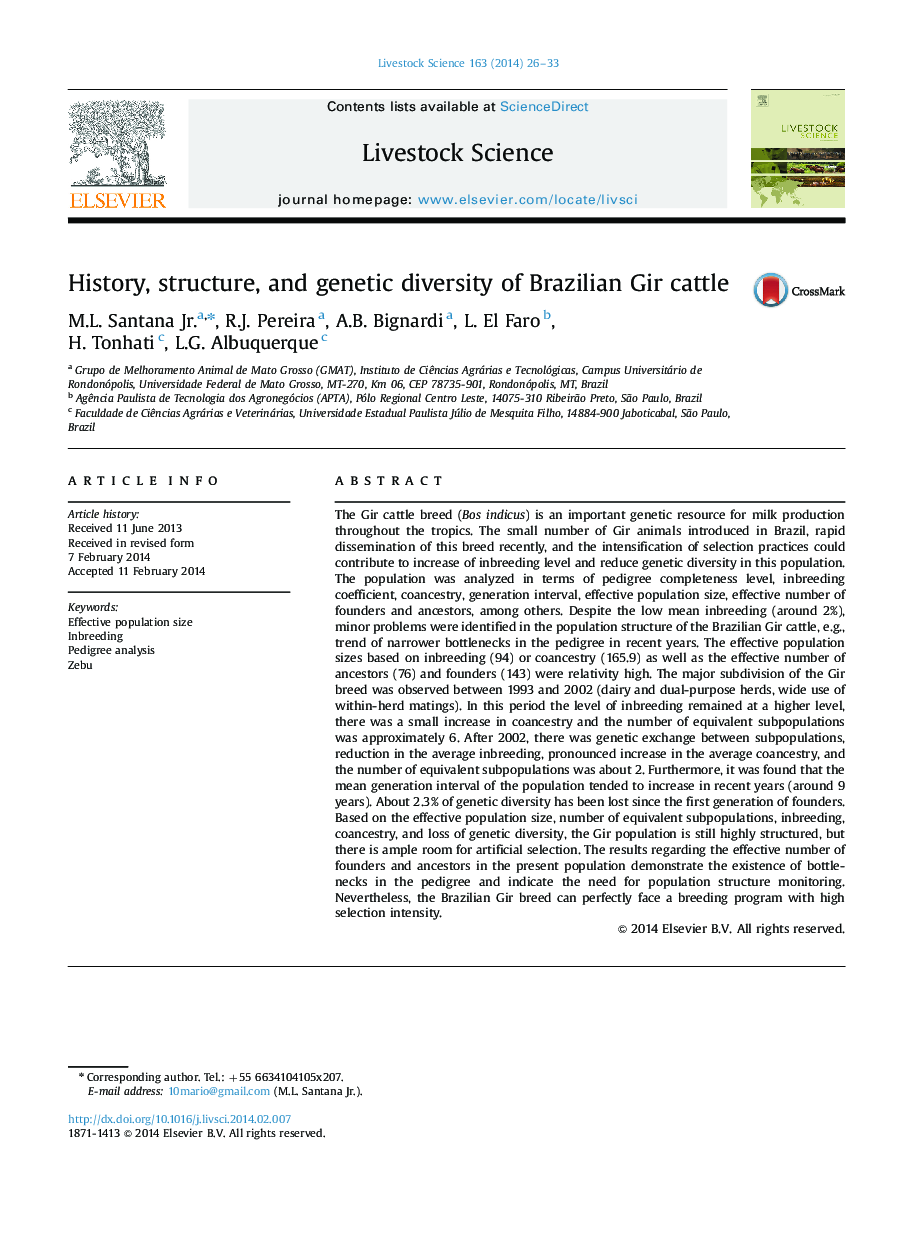| کد مقاله | کد نشریه | سال انتشار | مقاله انگلیسی | نسخه تمام متن |
|---|---|---|---|---|
| 2447209 | 1553969 | 2014 | 8 صفحه PDF | دانلود رایگان |
The Gir cattle breed (Bos indicus) is an important genetic resource for milk production throughout the tropics. The small number of Gir animals introduced in Brazil, rapid dissemination of this breed recently, and the intensification of selection practices could contribute to increase of inbreeding level and reduce genetic diversity in this population. The population was analyzed in terms of pedigree completeness level, inbreeding coefficient, coancestry, generation interval, effective population size, effective number of founders and ancestors, among others. Despite the low mean inbreeding (around 2%), minor problems were identified in the population structure of the Brazilian Gir cattle, e.g., trend of narrower bottlenecks in the pedigree in recent years. The effective population sizes based on inbreeding (94) or coancestry (165.9) as well as the effective number of ancestors (76) and founders (143) were relativity high. The major subdivision of the Gir breed was observed between 1993 and 2002 (dairy and dual-purpose herds, wide use of within-herd matings). In this period the level of inbreeding remained at a higher level, there was a small increase in coancestry and the number of equivalent subpopulations was approximately 6. After 2002, there was genetic exchange between subpopulations, reduction in the average inbreeding, pronounced increase in the average coancestry, and the number of equivalent subpopulations was about 2. Furthermore, it was found that the mean generation interval of the population tended to increase in recent years (around 9 years). About 2.3% of genetic diversity has been lost since the first generation of founders. Based on the effective population size, number of equivalent subpopulations, inbreeding, coancestry, and loss of genetic diversity, the Gir population is still highly structured, but there is ample room for artificial selection. The results regarding the effective number of founders and ancestors in the present population demonstrate the existence of bottlenecks in the pedigree and indicate the need for population structure monitoring. Nevertheless, the Brazilian Gir breed can perfectly face a breeding program with high selection intensity.
Journal: Livestock Science - Volume 163, May 2014, Pages 26–33
